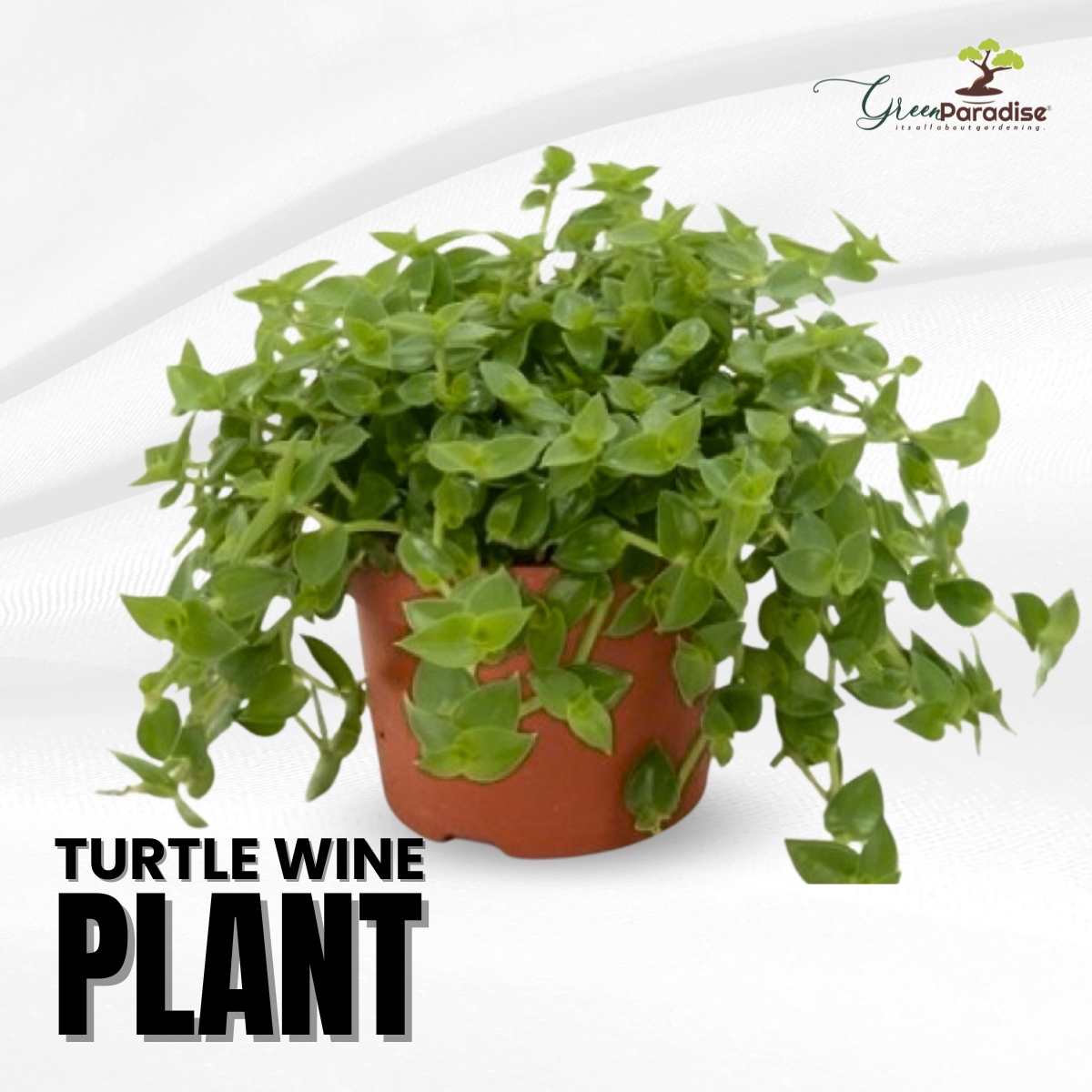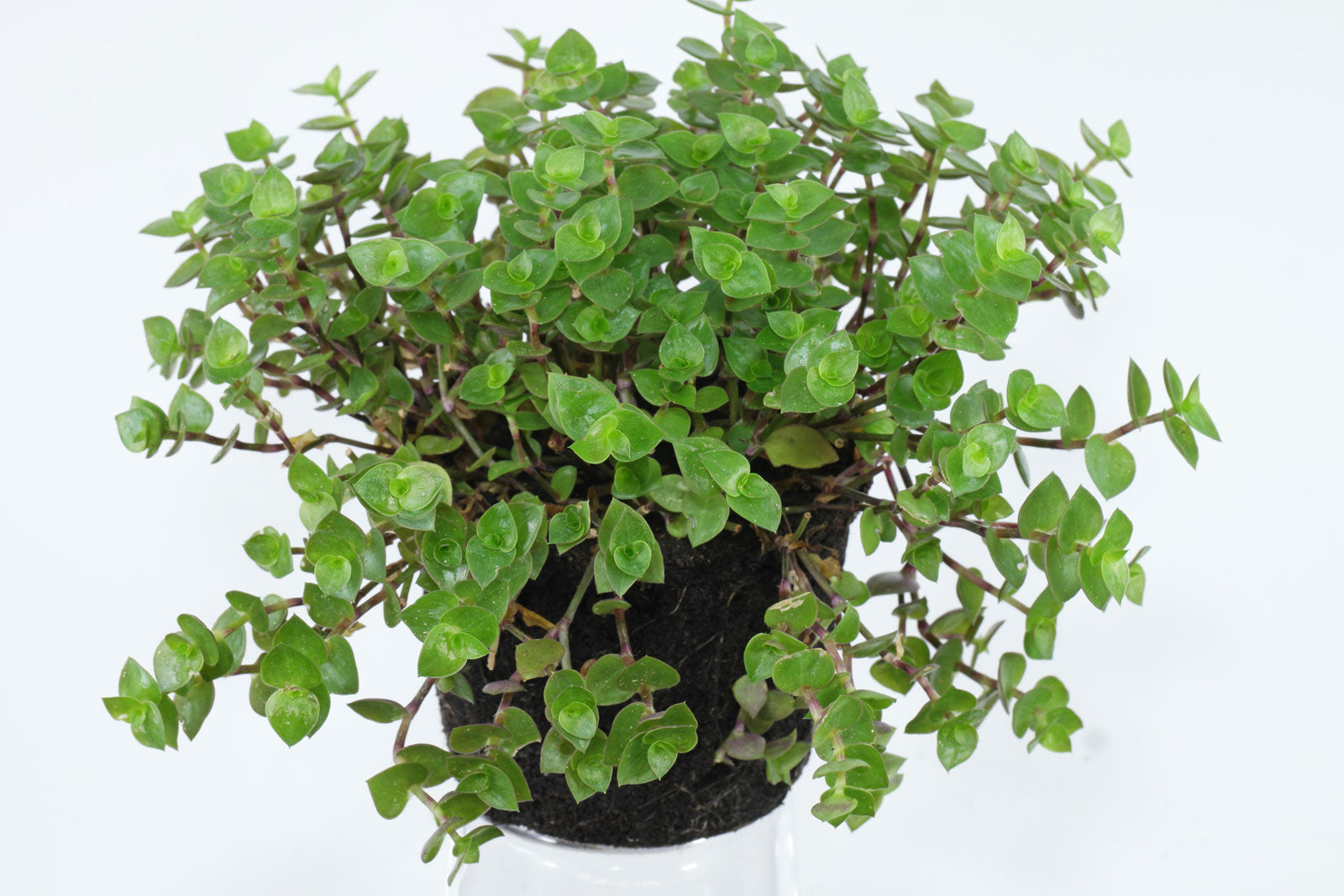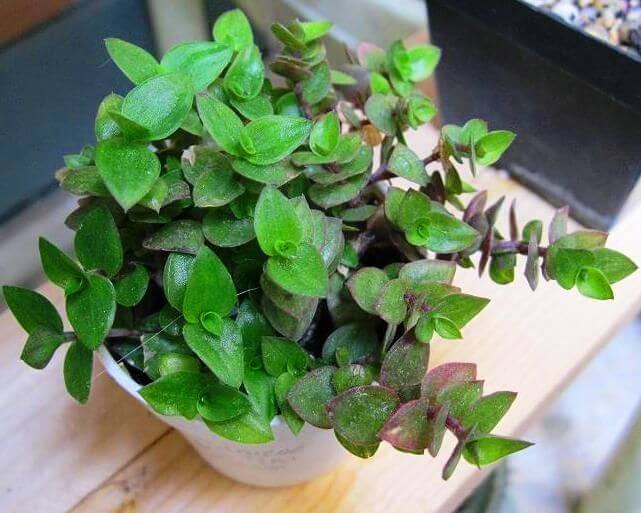


Discovering the Beauty and Benefits of
the Turtle Vine Plant
The world of indoor plants is a lush and diverse one, filled with an array of choices that can breathe life into your home. Among the green companions, the Turtle Vine plant (Callisia repens) stands out as a remarkable and often underappreciated gem. This versatile and visually appealing plant offers both aesthetic and therapeutic benefits, making it an ideal addition to any plant enthusiast's collection.
Aesthetic Appeal:
- Turtle Vine, also known as the Creeping Inch Plant, derives its name from its distinctive, turtle-like pattern of variegated leaves.
- Its leaves are small, succulent, and range from green to shades of pink and cream, forming a mosaic of color that's truly captivating.
- This plant's ability to drape gracefully over pots or hang in a lovely cascade of color makes it a perfect choice for hanging baskets, shelves, or as ground cover.
Low Maintenance:
- If you're new to the world of indoor plants or have a busy lifestyle, the Turtle Vine is an excellent choice.
- It is a low-maintenance plant that needs little care.
- Place it in indirect sunlight, water it sparingly (allowing the soil to dry between waterings),and you'll have a thriving plant that can last for years.
- It's also relatively pest-resistant, making it an easy-going choice for beginners.
Air Purification:
- Like many indoor plants, the Turtle Vine can contribute to better indoor air quality.
- It has the ability to remove toxins from the air, helping to create a healthier and more pleasant living environment.
- While its air-purifying capabilities might not be as potent as some other plants, every little bit helps when it comes to reducing indoor air pollutants.
Versatile Decoration:
- The Turtle Vine is versatile when it comes to decoration.
- You can grow it in hanging baskets, allow it to trail from shelves, or place it in a small pot on a table.
- Its colorful foliage adds a touch of vibrancy to any room, and it can easily be incorporated into various interior design styles, from minimalist to bohemian.
Medicinal Uses:
- Beyond its ornamental appeal, Turtle Vine has a history of medicinal use.
- In traditional herbal medicine, it has been employed for its anti-inflammatory properties.
- Some people use it topically to soothe skin irritations, while others consume it as a tea to alleviate digestive discomfort.
- However, it's crucial to note that any medicinal use should be approached with caution, and consulting a healthcare professional is advisable.
Easy Propagation:
- Sharing the joy of having a Turtle Vine plant in your home is easy.
- This plant is straightforward to propagate. You can take cuttings from a healthy plant, allow them to root in water, and then transfer them to soil.
- This not only allows you to expand your collection but also makes for a thoughtful and sustainable gift to fellow plant enthusiasts.
The Art of Cultivating Turtle Vine: A Green Thumb's Guide
Turtle Vine (Callisia repens), with its delicate cascading vines and vibrant foliage, is a charming addition to any indoor or outdoor garden. This hardy, low-maintenance plant is an excellent choice for both beginners and seasoned gardeners. In this comprehensive guide, we'll explore the ins and outs of growing and caring for Turtle Vine, turning you into a true plant whisperer.
Getting to Know Turtle Vine
- Before you embark on your Turtle Vine growing journey, it's essential to acquaint yourself with this delightful plant.
- Turtle Vine, also known as Inch Plant or Creeping Jenny, is a member of the Callisia family, known for its sprawling, creeping nature. It's native to Central and South America but has become a favorite worldwide due to its unique beauty and ease of care.
Selecting the Right Location
- One of the first crucial steps in successfully growing Turtle Vine is selecting the right location.
- This plant thrives in bright, indirect light.
- Placing it near a north or east-facing window is an excellent choice, as it allows the plant to soak up sunlight without being scorched.
Potting Mix and Containers
- Turtle Vine prefers well-draining soil, so a good quality potting mix is essential.
- A mix containing equal parts of potting soil, perlite, and sand works well.
- Choose a pot with drainage holes to prevent overwatering, as Turtle Vine is susceptible to root rot.
Planting Turtle Vine
Prepare the Pot:
Fill the bottom of your chosen pot with a layer of small stones or broken pot shards to further aid drainage.
Plant the Vine:
Gently place the Turtle Vine in the pot and cover its roots with the potting mix. Ensure the crown of the plant is at or slightly below the soil surface.
Watering:
Water thoroughly but allow the top inch of the soil to dry out before watering again. Overwatering can cause to root rotting, so be cautious.
Caring for Your Turtle Vine
Turtle Vine is a relatively low-maintenance plant, making it a perfect choice for busy individuals or those new to gardening.
Here are some care tips to keep your Turtle Vine healthy and thriving:
Pruning:
Trim your Turtle Vine occasionally to maintain its shape and encourage bushier growth.
Fertilizing:
During the growing season (spring and summer), apply a balanced liquid fertilizer every 4-6 weeks to support healthy growth.
Repotting:
Every 2-3 years, consider repotting your Turtle Vine to refresh its soil and provide more space for growth.
Pest Control:
While Turtle Vine is generally pest-resistant, be on the lookout for common houseplant pests like spider mites or aphids. still, treat your factory instantly with insecticidal cleaner, If you spot any.
Propagation
Turtle Vine is easily propagated through stem cuttings.
Here's how to do it:
Snip a healthy stem just below a leaf node.
Let the slice air sot for a day to allow the cut end to callus.
Plant the cutting in a small pot with the same potting mix used for mature plants.
Keep the soil lightly moist until the cutting establishes roots.
Turtle Vine is a wonderful addition to any indoor or outdoor garden. Its charming cascading vines and minimal care requirements make it a favorite for both novice and experienced gardeners. Remember to provide the right amount of light, well-draining soil, and periodic care to ensure your Turtle Vine flourishes. With a little attention and care, your Turtle Vine will thrive and become a beautiful, vibrant addition to your plant collection.
The Turtle Vine plant, with its captivating appearance and ease of care, is an excellent choice for both beginners and experienced plant lovers. Its air-purifying qualities, versatility in decor, and potential medicinal uses only add to its appeal. So, if you're looking to bring a touch of nature into your home, consider adopting this charming, trailing beauty into your indoor garden.
Happy gardening!




